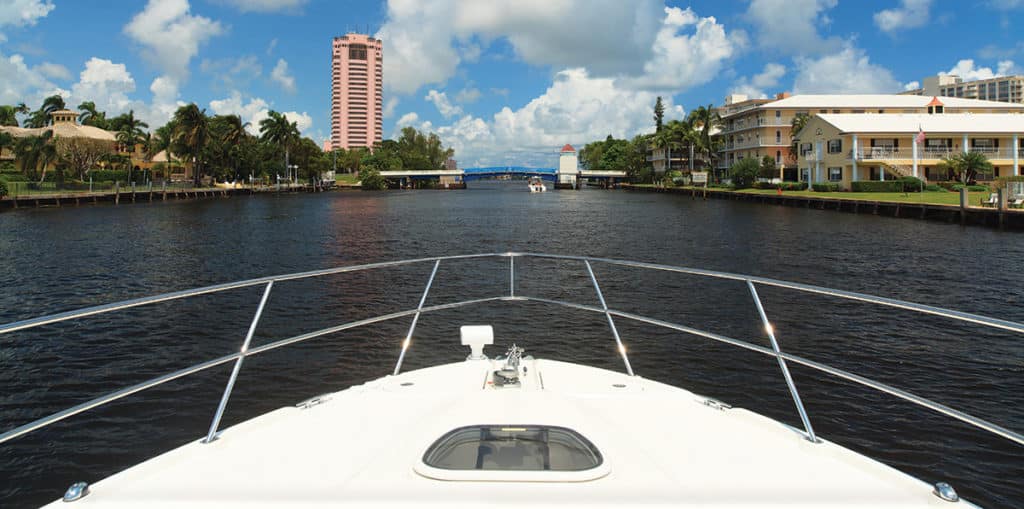
When we first moved to Florida my dad used to take my brothers and me fishing off the breakwater at the Boca Raton Inlet. We didn’t catch a lot of fish, but watching the incoming boat traffic always kept us entertained. It was, and still is, a dangerous inlet to transit because of shifting sandbars at the mouth that always seemed to catch a boater unaware. The potential for a boat to come to a grinding halt or take an unexpected surfing trip always seemed pretty high.
I think about that every time I plan to enter a new inlet or harbor. Specifically, what is out there that can get me into trouble? Here are a few things to consider when entering new waters.
Shop Local
As is the case with those shifting sandbars, not every hazard to navigation shows up on a chart. Before coming to a new inlet or harbor, plan ahead by acquiring a little local knowledge. In the 21st century, you can do this through a bit of Internet browsing, checking local boating forums, or even picking up the phone and calling a nearby harbor master. If you make the decision to explore new waters while already on the boat, hail the Coast Guard on VHF Channel 16, or check to see if your smartphone has a signal. You can acquire some local knowledge within minutes. Many inlets along the coast also now have webcams for live-action viewing of real-time conditions.
Had half the people we watched struggle back in Boca done a little recon, they would have known those rolling swells turned into breakers at the mouth.
Follow the Leader — or Don’t
We’ve all done it, fallen in behind a boat ahead of us only to watch that boat run aground or roam way out of the channel. The simple rule is to never assume the captain of another boat knows what he or she is doing. Certain boaters know just enough to be dangerous.
The exception to the rule would be commercial vessels. Odds are the captain of a charter fishing boat, a dive boat or a commercial fishing boat leaves and enters a local harbor on a nearly daily basis and would be keen to its quirks or any changes that happened yesterday that the recreational community might not be aware of. If you can stand down and observe how they approach, you’ll quickly learn what to avoid.
Watch for Traffic
The one caveat about commercial traffic, particularly that involves harbor pilots and ships, is that they don’t always see you. Firstly, they’re trying to complete a job and are not necessarily paying attention to you. Secondly, in close quarters captains piloting from the helm of a large vessel might not even see you. Even with radar, in close range your vessel could be lost in his unit’s main bang — the circle around every boat that does not show up on radar (with the exception of some recreational broadband units). A harbor pilot once told me that from the bridge most ships have a blind spot in front of their bow about the length of three football fields. So, even if you’re looking to commercial vessels for insight, don’t get too close for comfort.









